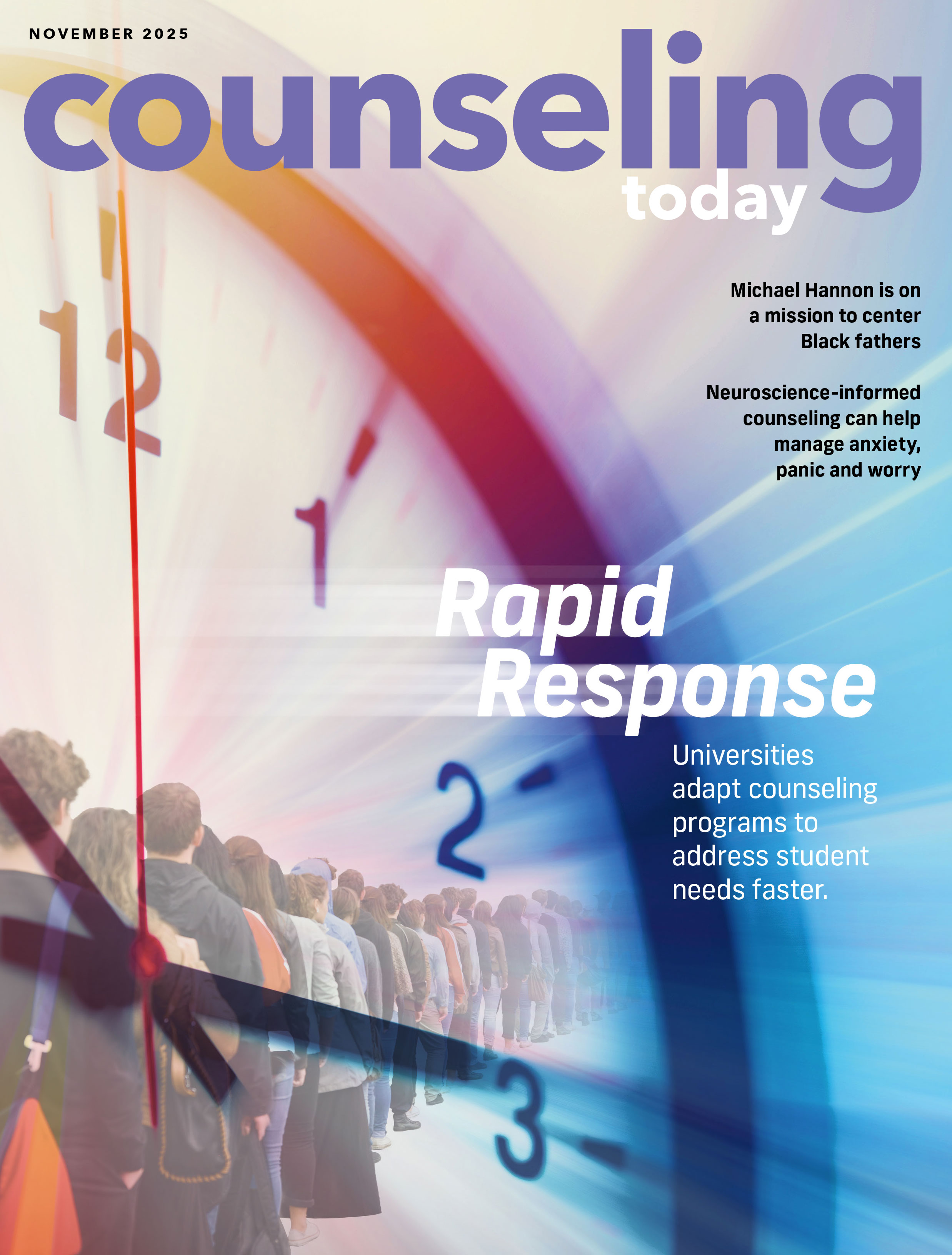Revisiting the Gloria Films: Teaching Classic Psychotherapy to Gen Z
 By Laurie Dickstein-Fischer, PhD, LMHC, NCC, and Margaret Mullaney
By Laurie Dickstein-Fischer, PhD, LMHC, NCC, and Margaret Mullaney
Can you imagine filming your most vulnerable therapy session and letting the entire world critique it? That’s exactly what Gloria Szymanski did in 1965. But how would these iconic approaches hold up in today’s mental health culture?
In fall 2010, I had the opportunity to teach an undergraduate counseling theories course. As I prepared my syllabus, I searched for engaging materials to bring the concepts to life. That’s when I discovered Three Approaches to Psychotherapy, better known as the “Gloria Films.” These films offer a rare behind-the-scenes look at therapy sessions featuring three prominent therapeutic approaches: client-centered therapy, Gestalt therapy and rational emotive therapy.
At the time of their release, these films were groundbreaking, offering an unprecedented glimpse into the therapist-client relationship. The sessions, featuring a real client, Gloria, were meant to demonstrate various therapeutic techniques in action. Over the years, the Gloria Films have remained a staple in counseling education, sparking discussions on the effectiveness of different modalities and the evolving nature of psychotherapy.
When I revisited the films with my Gen Z students, their reactions were striking. They weren’t simply evaluating therapeutic techniques — they were critically examining power dynamics, highlighting representation gaps and calling out cultural norms that now feel outdated and misaligned with contemporary mental health discourse. Their reactions have prompted a necessary reexamination of how we present these films in the classroom and how our teaching methods must evolve to better meet the needs of today’s students.
A Shifting Perspective: Gen Z’s Response to the Gloria Films
Unlike earlier generations, who may have focused on the efficacy of the therapeutic techniques, Gen Z views the films through a much wider lens. Raised in an era where conversations about feminism, social justice and intersectionality dominate online discourse, Gen Z brings a critical eye to their viewing. And let’s be honest — when you’ve spent hours scrolling through mental health TikTok, watching Gloria navigate three older male therapists hits very differently.
Gen Z grew up with immediate access to mental health content. With just a few swipes, they can watch therapists offer bite-sized insights on attachment styles, trauma responses or self-soothing techniques — all in under 60 seconds. Therapy, once a private and often stigmatized experience, is now mainstream entertainment.
So, when they watch Gloria’s sessions unfold in real time, the contrast is stark. The slow, deliberate pacing of Rogers’ gentle reflections, Perls’ abrasive confrontations and Ellis’ no-nonsense rationality feels almost foreign.
Teaching Classic Psychotherapy Films to a Modern Audience
While the Gloria Films remain a valuable educational resource, their relevance must be framed within a modern context. To ensure these films remain engaging and meaningful for Gen Z students, consider the following teaching strategies:
- Contextualize the Films Historically and Culturally
- Provide background on psychotherapy in the 1960s, highlighting the social and cultural norms that influenced the field.
- Discuss how therapy has evolved, incorporating contemporary approaches that emphasize collaboration, intersectionality and cultural competence.
- Encourage Critical Engagement
- Ask students to analyze the films through multiple lenses, including feminist, multicultural and ethical perspectives.
- Foster discussions on how gender, power dynamics and cultural assumptions influence therapeutic interactions.
- Compare Classic and Modern Approaches
- Show clips of contemporary therapy sessions to illustrate how techniques have changed over time.
- Have students explore how current therapeutic models integrate elements of client-centered, Gestalt and rational emotive therapy while addressing social justice and equity concerns.
- Make Learning Interactive
- Use role-playing exercises where students practice different therapeutic approaches with modern adaptations.
- Incorporate discussions on how therapy today incorporates digital platforms, telehealth and social media influences.
- Honor Gloria’s Contribution
- Emphasize the importance of Gloria’s willingness to share her personal experiences, shaping how generations of therapists learn about counseling.
- Reflect on the ethical considerations of using real client experiences in educational settings and how informed consent has evolved.
Looking Ahead: Evolving the Teaching of Psychotherapy
Teaching the Gloria Films today requires an awareness of generational shifts in values, learning styles and cultural awareness. By fostering critical discussions and contextualizing these historic films, educators can ensure they remain a meaningful tool for future counselors.
As we mark the 60th anniversary of these influential films, we should acknowledge Gloria’s significant contribution to the field of psychotherapy. Without her willingness to be vulnerable on camera, we would not have this invaluable resource. As we continue to evolve in our understanding of mental health and counseling, we must honor both the past and the present in our teaching, ensuring that educational methods remain inclusive, engaging and relevant to the next generation of mental health professionals.
Laurie Dickstein-Fischer, PhD, LMHC, NCC, is a professor of psychology at Salem State University. She is a huge fan of pop culture and how it can be used to advance mental health initiatives with students.
Margaret Mullaney is a graduate student in the school counseling program at Salem State University and a research assistant focused on counseling and education. Her personal interests include adolescent development and substance use prevention, with a focus on interventions for teens and at-risk youth.
Note: Opinions expressed and statements made in this blog do not necessarily represent the policies or opinions of ACA and its editors.

